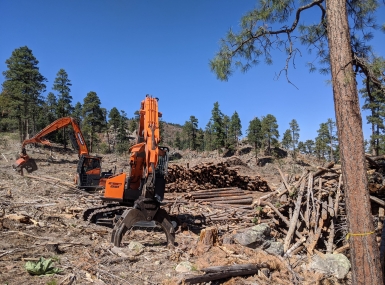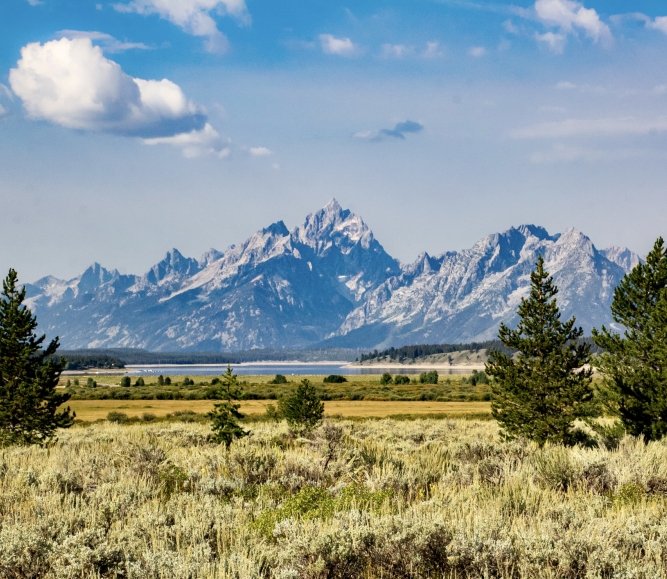Author

Charlie Ban
Upcoming Events
Related News
If the National Center for Public Lands Counties aims to be known as the repository of knowledge and experience learned by veteran county officials, it could do worse than featuring Terry Wolf as a seasoned expert.
Wolf has been a Washakie County, Wyo. commissioner for 23 years, and has faced close to the whole gamut of challenges a public lands county official could encounter.
When Wolf came on board, there was no available NEPA (National Environmental Policy Act) training. Since then, the state and county commissioners association has worked to provide it for everyone, “so when we signed in as cooperating agencies, we were learning on the go,” he said while participating in a panel discussion with other Wyoming county commissioners March 2 during NACo’s Legislative Conference.
“One of the main reasons I put my name in to run for the county commission was to step up to the plate and be part of the solution and boy, did I get into the middle of something,” he said, referring to the Big Horn Forest plan revision, which lasted several years.
Johnson County Commissioner Bill Novotny illustrated the direct relationship public lands counties have with the federal government.
“It felt like every day, the previous administration turned out a new regulation or began a rulemaking process that was going to put our way of life and our economies at risk,” he said.
The center is collecting county leaders’ experiences, from broad narratives down to detailed natural resource plans. Those completed resource plans can serve as models for counties starting their own. As president of the Wyoming County Commissioners Association, Novotny worked with Gov. Mark Gordon (R) to appropriate money for each county through the state’s Federal Natural Resource Policy Account to help prepare natural resource plans, which define the policies, goals and objectives for managing public lands and working with federal agencies.
“That’s the best way you will have defensible items, if you end up in court over some of these plans, is to have that adopted county resource plan that has been updated,” Novotny said.
“Get as many of the stakeholders at the table as possible so you get a good and durable document. But you can’t do that by consensus because there is always going to be an element that’s going to dig their heels in and say that ‘it’s our way or the highway.’ At the end of the day, [do] what is best for the majority.”
Carbon County Commissioner John Espy, immediate past president of the Western Interstate Region, noted that it’s important that natural resource plans are consistent with a county’s land use plan.
But while those documents, which are available through the center, serve as the foundation for the local-federal relationship, maintaining personal relationships with local representatives from the Forest Service or Bureau of Land Management requires an ongoing commitment.
“Keep an eye on them, because they leave and somebody else comes in [and] you might not realize that new person came in. You always want to have that ability to just reach out to somebody,” Wolf said.
And much like with emergency management planning, the best time to make those relationships is as soon as you can, ahead of the time when parties have to cooperate on an issue.
“Then there’s that trust factor that’s already established,” Espy said. “They know what you’re about, you know what they’re about.”
And those efforts to connect shouldn’t end there.
“You have to understand the importance of relationships, and it’s not just the relationships with the federal agencies,” Novotny said, noting that while working on sage grouse protection, the state’s 17 counties also collaborated with conservation districts, Wyoming Game and Fish, Wyoming State Lands and the state forester.
“That sharing of information and relationship-building between the commissioners and those state individuals, especially when we get into governor’s consistency review, that was critical. We invited some speakers to come in and educate us on core areas and conservation banks and just a variety of things so that we could be better cooperators.”
More than anything, the county officials involved in planning the National Center for Public Lands Counties want to make it easier for county officials in public lands counties to take on the mantle of leadership.
“It took me three years just to learn all about being a county commissioner before I started working on public lands, and I came in with a good amount of experience,” Espy said later. “If I didn’t know a little bit of what I was doing, it would have been like drinking out of a firehose.”
Related News

Counties search for footing amid federal workforce cuts
Staffing reductions in the federal land management agencies are upsetting the intergovernmental balance in public lands counties.

U.S. House passes bipartisan legislation encouraging active forest management
On January 23, the U.S. House of Representatives passed the Fix Our Forests Act (H.R. 471), also known as FOFA. Initially introduced by Representatives Bruce Westerman (R-Ark.) and Scott Peters (D-Calif.), this bipartisan legislation will promote active forest management to curtail the wildfire crisis and protect rural communities, infrastructure and natural resources.
Featured Initiative
National Center for Public Lands Counties
The NACo Center for Public Lands Counties is dedicated to advancing the policy and practice study of America’s public lands counties. Our mission is to deepen the understanding and address the unique challenges faced by counties containing federal lands through strategic research and collaboration.

